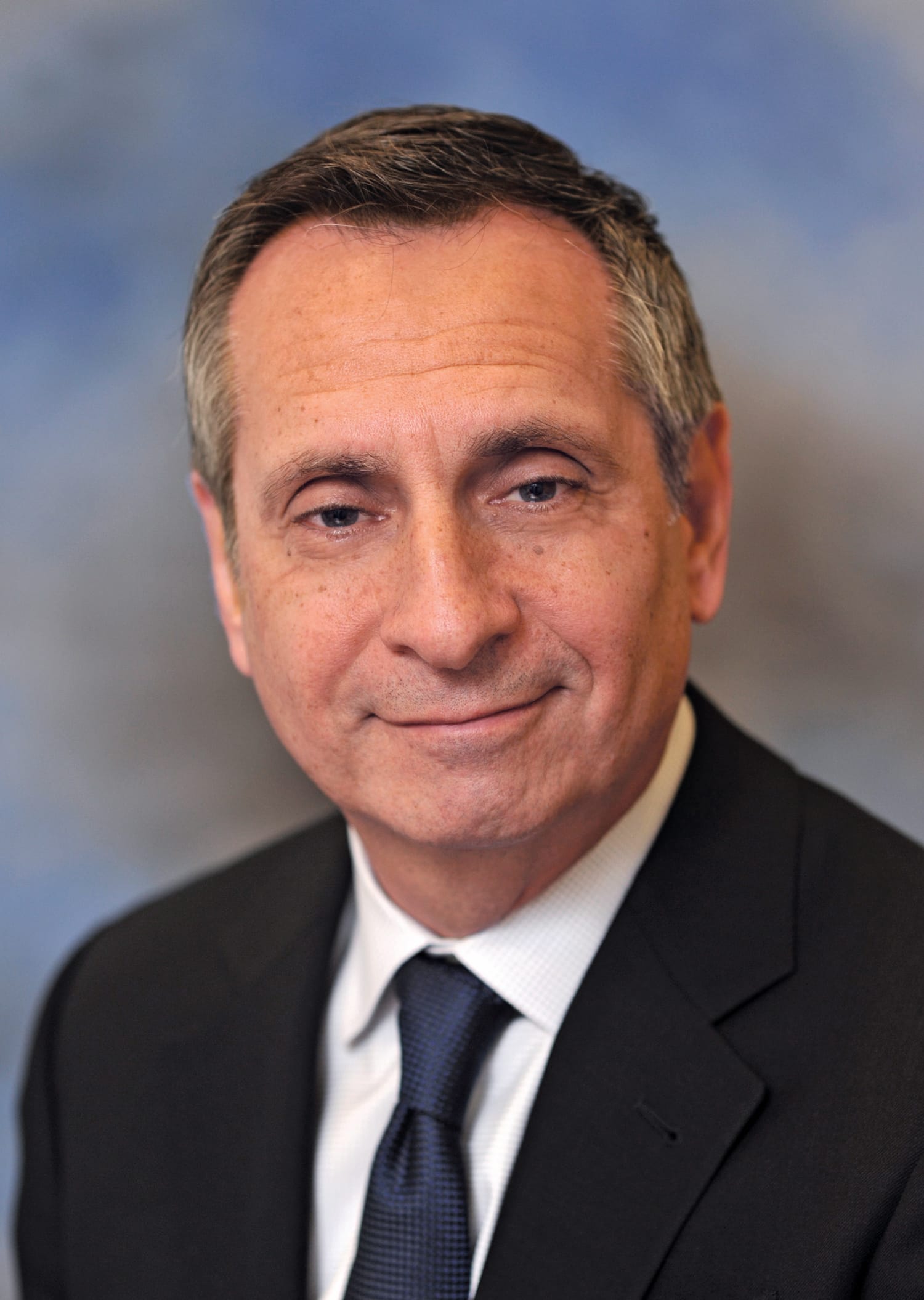NEW YORK – Few industries have escaped the radical shifting of landscape that has been the collateral damage of digitization. Events that were originally called “market disruptions” have become a steady rain of complex, turbulent shifts, leaving even the most adaptive companies struggling to keep up.
Disruption in retail pharmacy

Benjamin Finzi
Although retail pharmacy seemed somewhat immune to disruption for much longer than most industries, it is no exception. In the last six months, headlines have been full of indicators that the chain drug store category has now also entered the realm of revolutionary metamorphosis. When the tectonic plates finally stop shifting, it is likely to emerge a much changed industry.
How have these disruptions shown up in retail pharmacy? On a general level, new partnerships, alliances and forms of acquisition have been upending the well-seated structure of the industry — an industry that is difficult for outsiders, however skilled in disruption, to unseat. In part it owed its unbreachability to a massive regulatory structure, logistical and distribution security specifications, and deeply established patient relationships.
No longer is that so. In fact, the most intense wave of disruption has come from within health care itself. Retail pharmacies have partnered with or bought major health insurance companies. Consolidation and alliances have left a mere handful of major players in the retail pharmacy space, the pharmacy benefit manager sector and the wholesale distribution channel.
Simultaneously there has been disruption in how the retail pharma value chain can be managed and sustained, with PBMs becoming much more important stakeholders in the end-to-end picture. With three major PBMs aligning with a national insurer in the span of one quarter and one other potentially large player entering the market, there’s now the reality — amid a flurry of acquisitions — that the bulk of PBMs are linked to health insurance.
We’ve also seen external disruptors enter the chaotic fray, in the form of agile tech startups that are feeling the pulse of the consumer and delivering change — in both value and convenience — faster than major retail pharmacies can. Major retailers with pharmacy arms have been acquiring these health tech startups to stay ahead in the race to legitimate online pharmaceuticals for consumers. A consortium of health systems has newly entered the generic pharma scene, threatening to combat price increases on generics and spates of medication shortages.
Almost daily, we hear about new, previously unconceived of ways that disruption is changing the landscape.
An ‘undisruptable’ leader

Vincent Firth
First and foremost, the industry should acknowledge that — though they were able to stave it off for a long time — disruption is a reality, a constant and a threat to everything the retail pharmacy sector thinks it knows about itself. We’ve been studying facets and attributes of “undisruptable” leadership, have seen some consistencies that apply as much to retail pharmacy as to financial services, and would like to offer some of what we’ve found.
There is no doubt that one key to staying ahead of the chaos, in addition to keeping on top of internal efficiencies and a culture of client service, is building symbiotic relationships with external partners. Retail pharma is showing itself to be doing well in this ballpark, with the many newly emerging synergies with insurance, medtech and health providers.
Beyond that, we have recently completed research that points to a handful of aspirational characteristics that could be required of the new brand of leaders who will likely be able to successfully navigate these chaotic and disruptive times. After conducting in-depth interviews, 15 characteristics came to the fore, and we further distilled these. Here are recommendations that we’ve developed, based on what CEOs of 24 of some of the world’s largest, most complex companies are telling us about what it might take to be undisruptable:
• Undisruptable organizations, and their leaders, should embrace ambidexterity.
Being ambidextrous in this context means being able, simultaneously and across the entire organization, to operate equally comfortably between the two “hands” of exploitation and experimentation. There is an inherent tension between short-term, efficiency-driven profit optimization and “fail fast, fail often” exploration — but being ambidextrous somehow cuts through the tension to fully integrate both modes throughout the entire organization. This means embedding these counterbalanced forces across all processes, structures and cultures, rather than extracting exploitation in one unit and experimentation in another. In retail pharma, incumbent players who want to stay ahead of the curve should consider continually enhancing their internal operations while pushing out the limits of innovation.
• Leaders should cultivate emotional fortitude.
CEOs should acquire the ability to use the fear of the constant industry shifts to their organization’s advantage. In these disruptive times, failure is a necessary risk — and failing big is more reality than myth. We call this ability to accept failures and quickly pivot to try new things “emotional fortitude”: Leaders need to combine a sober assessment of potential risks and roadblocks with the audacity to pursue lofty visions. The CEOs we interviewed stressed the importance of being vision driven in action as well as in word. This new breed of CEOs thus brings chaos into the organization — and understands that failure, periodically and on a certain scale, is inevitable.
• Leaders should adopt a beginner’s mindset.

Mark Lipton
Zen Buddhism holds that “in the beginner’s mind there are many possibilities, but in the expert’s there are few.” CEOs are now faced with the challenge, and the imperative, of seeing the world with childlike eyes. Rather than trying to be the smartest person in the room, they will find better outcomes in asking questions, even about things they do know — leading to more intent listening and nonjudgmental consideration of what they hear. They also need to find patterns amid the chaos. Success in a world of disruption depends on knowing what they do not know — a paradox between embodying practicality and childlike curiosity as they ask questions, express doubt and rethink their own assumptions.
• Leaders should master disruptive jujitsu.
Recognizing the importance of pattern recognition, leaders then need to figure out how to undo those patterns. By reverse-engineering emerging responses to disruption from competitors or others in the industry, leaders become masters of disruptive jujitsu. They take the strength of the opponent and use it against them. The path to successful disruptive jujitsu goes like this: Recognize how competitors and others in the environment are threatening to disrupt you; break down these disruptions into their components; choose the components that can best help support and strengthen the organization; and, finally, find a way to “hijack” these disruptive elements for your own competitive advantage. The ultimate goal of disruptive jujitsu is finding ways to turn threats to your advantage.
• Leaders should set an organization-wide example of getting into their customers’ minds.
All retail pharmacies need to focus on their customers. But the new brand of CEOs should do everything possible to gain insight into the experience of their ultimate end users. The truly undisruptable leader will stop at nothing to become much more proficient in discovering their customers’ subtlest habits, desires and concerns. It calls for intensive study of the end-to-end customer experience, from the top of the marketing funnel to exceptional after-sales service. This is a search for innovative ways to delve far deeper into the consumer’s wishes and needs — whether it is for lower-cost generics or ultra-fast home delivery — an understanding of individual customer needs and reactions that sometimes go beyond the customer’s expressed wishes.
In sum, chaotic and disruptive times call for a new breed of leadership in retail pharmacy, as across all industries. The changes required to face the constant shifts successfully are not easy, and cannot be acquired overnight. But the more retail pharma CEOs can begin thinking in these seemingly anti-CEO modes, the faster they will likely see positive change in their organizations.
Benjamin Finzi is a managing director and co-leads Deloitte’s CEO Program. He is based in New York City and can be reached at bfinzi@deloitte.com. Vincent Firth is a managing director with Monitor Deloitte and Deloitte Consulting LLP. He co-leads Deloitte’s CEO Program and is based in Philadelphia. He can be reached at vfirth@deloitte.com. Mark Lipton is graduate professor of management at The New School in New York City, an author and a contributor for Deloitte’s CEO Program. He is based in New York City and can be reached at mark@marklipton.com.









